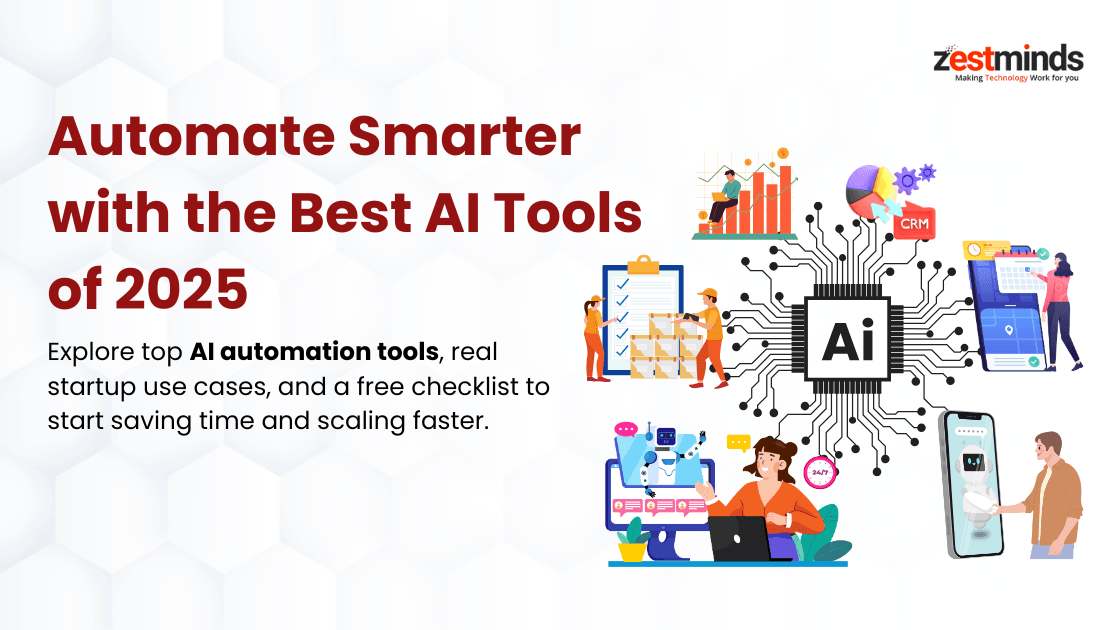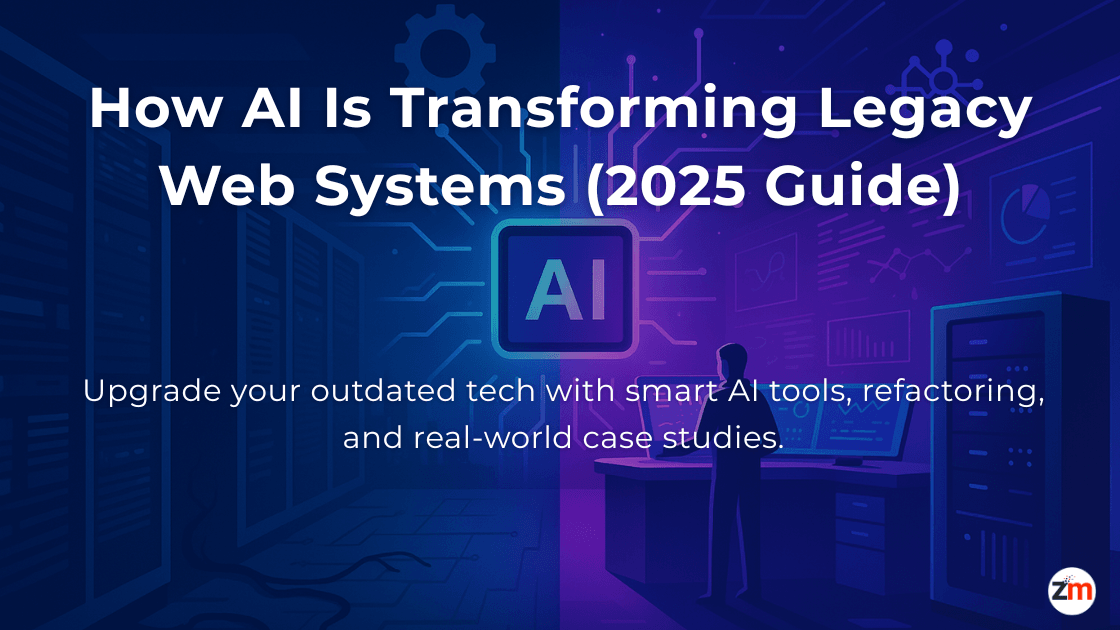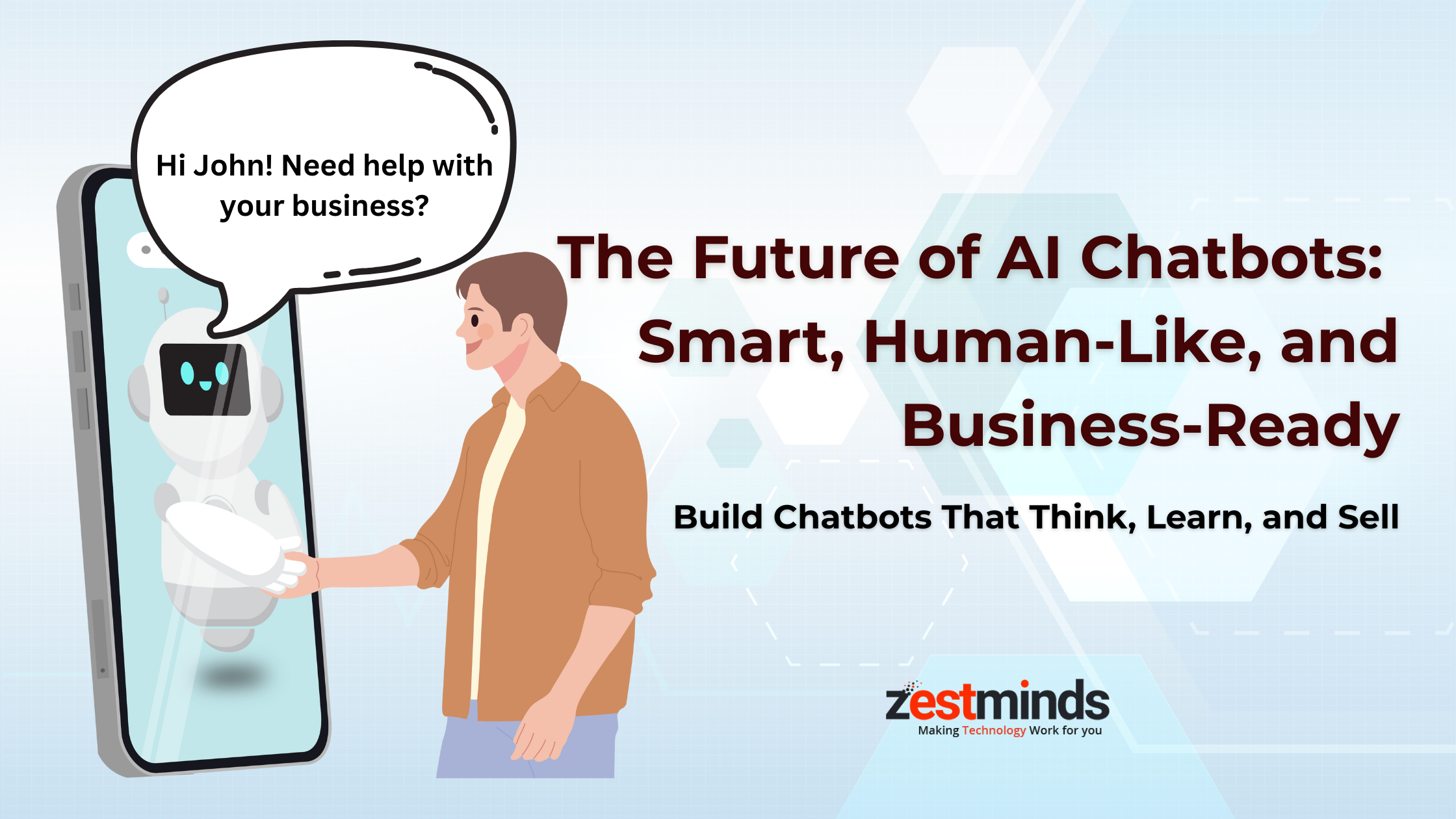Generative AI for Business: Beyond ChatGPT - Innovation, Compliance & Use Cases
Generative AI goes far beyond ChatGPT. For enterprises, it means custom AI systems that deliver ROI, stay compliant, and scale with confidence. From automating workflows to building personalized customer experiences, enterprise-ready AI is fast becoming the backbone of digital transformation.
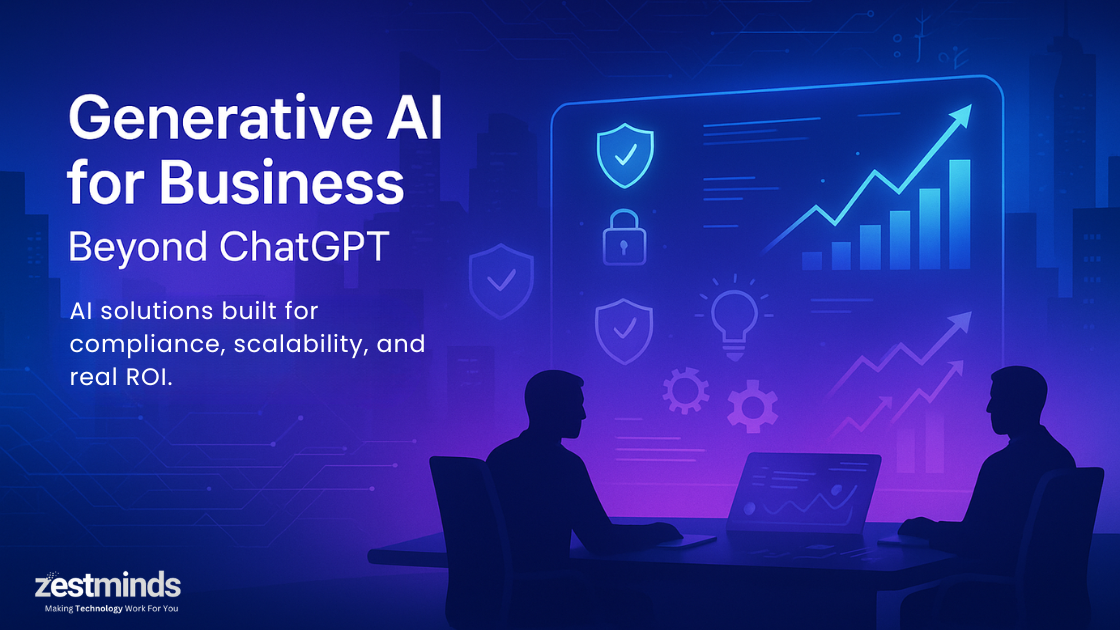
"AI won't replace businesses. But businesses using AI will replace those that don't."
Generative AI for business is no longer a futuristic buzzword. In 2025, it has become the new foundation for enterprise growth. While ChatGPT put generative AI into the public spotlight, companies quickly realized it's just the tip of the iceberg.
Real value emerges when businesses go beyond ChatGPT, leveraging generative AI for business AI use cases like automation, compliance, analytics, customer experience, and innovation at enterprise scale. To succeed, leaders adopt enterprise AI solutions that integrate with core systems, align with AI compliance and regulations, and produce measurable ROI.
This guide shows how leading organizations are using generative AI, where the opportunities and risks lie, and how your business can adopt it with confidence through an AI roadmap for digital transformation.
Why Generative AI Matters Now
Generative AI is like electricity in the early 1900s. At first, it powered a bulb. Soon, it powered entire industries.
ChatGPT may have been the spark, but enterprises are asking: How do we power the entire business with this?
Generative AI today enables businesses to:
- Cut operational costs by 20–30% (Gartner)
- Unlock new digital revenue streams
- Strengthen compliance and risk management
- Build future-proof customer-first products
Summary: For CTOs, founders, and compliance teams, generative AI is no longer hype, it’s an enterprise growth engine.
Moving Beyond ChatGPT: Why Enterprises Need More
ChatGPT is great for quick answers, but enterprise AI has higher stakes.
What Enterprises Really Need
- Customization → Industry-specific models for healthcare, finance, retail, or law
- Integration → Seamless fit with ERP, CRM, and cloud systems
- Scalability → Handle millions of transactions reliably
- Security → Protect sensitive data under strict compliance rules
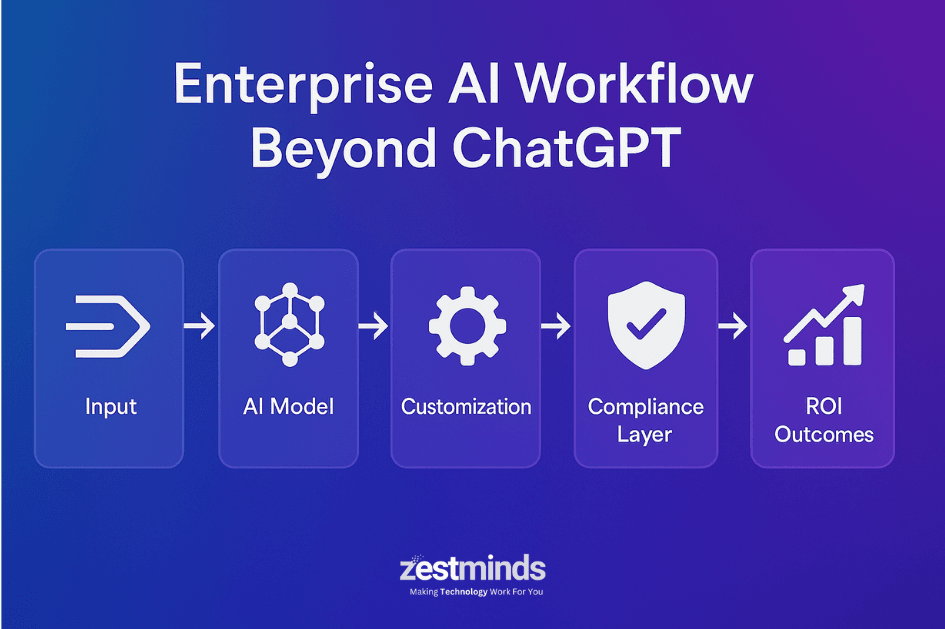
Diagram showing enterprise AI workflow beyond ChatGPT with customization, integration, compliance, and ROI outcomes.
Think of ChatGPT as a calculator. Enterprises need a financial system. One gives quick answers. The other runs the business.
Example: A retail chain might begin using ChatGPT for product descriptions. But soon, they demand an AI content engine that:
- Generates SEO blogs
- Personalizes ads at scale
- Updates catalogs across Shopify & Magento in real time
That’s when you move beyond ChatGPT.
Case in Point: AI-powered ride-sharing app by Zestminds used generative AI for real-time driver-passenger communication, proving that enterprise AI must be more than chat.
ChatGPT vs. Enterprise AI Solutions
| Feature | ChatGPT | Enterprise AI |
|---|---|---|
| Customization | Generic responses | Domain-specific models tailored for industry |
| Integration | Standalone chatbot interface | Seamless integration with ERP, CRM, cloud systems |
| Compliance | No built-in compliance controls | Aligned with GDPR, HIPAA, CCPA, DPDP |
| Scalability | Limited usage scale | Enterprise infrastructure with millions of transactions |
| ROI Focus | Proof-of-concept experimentation | Designed for measurable ROI & business outcomes |
Walking the Compliance Tightrope
Adopting AI isn't just about technology, it's also about trust and law.
AI must comply with GDPR, HIPAA, CCPA, DPDP, and WCAG. Ignoring compliance risks fines, lawsuits, and loss of credibility.
Top 5 Compliance Risks
- Data Privacy Violations - training AI on personal data without consent
- Bias & Fairness Issues - AI reproducing discrimination in outputs
- Copyright/IP Infringement - models trained on unlicensed datasets
- Hallucinations - AI inventing facts with real-world damage
- Audit Gaps - no record of how AI made decisions

Infographic showing top compliance risks of generative AI for enterprises including privacy, bias, copyright, hallucinations, and audit gaps..
"Responsible AI is not just good ethics; it’s good business." - NIST AI Risk Management Framework
Case Example: Zestminds built a HIPAA-compliant AI hospital system. It allowed doctors to use AI securely without compromising patient privacy, proving compliance can drive adoption.
Where Generative AI Delivers ROI Today
Healthcare
- AI chatbots triaging patients
- Summarizing patient histories in seconds
- Synthetic data generation for safer research
Imagine reducing doctor paperwork from 2 hours to 15 minutes. That’s AI in action.
Financial Services
- Fraud detection in real time
- Automated compliance reports
- Personalized robo-advisors for wealth management
Retail & E-commerce
- Bulk product descriptions across 10,000+ SKUs
- Virtual AI try-ons for clothing and furniture
- Predictive dynamic pricing engines
Learn how Zestminds built an AI-first marketing app for personalized ad campaigns at scale.
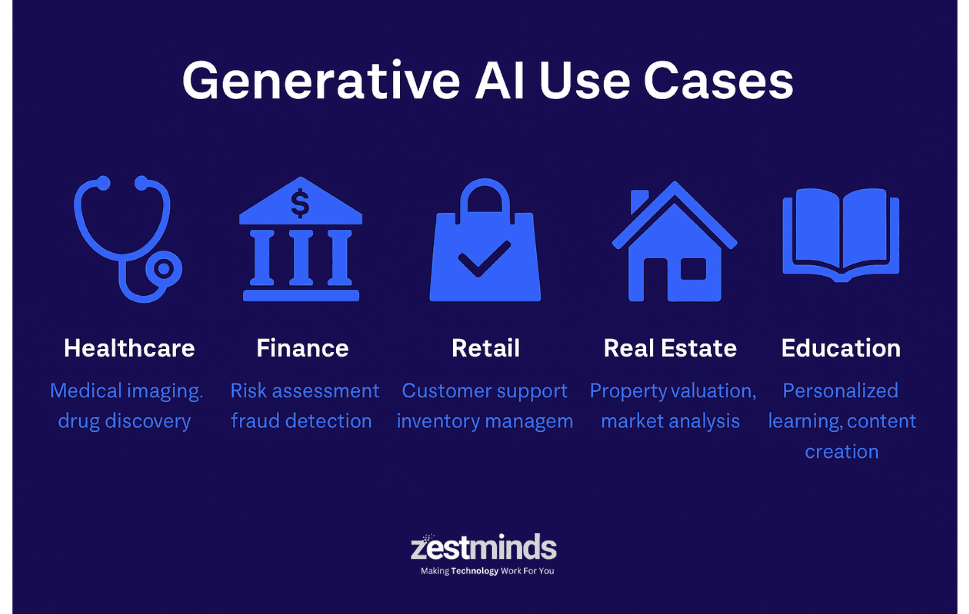
Infographic showing generative AI use cases across healthcare, finance, retail, real estate, and education..
Real Estate
- Automated property listings
- AI chatbots handling 24/7 buyer questions
- Predictive analysis for property valuations
Case Study: Herdum platform by Zestminds leveraged AI for smarter Security Network.
Education
- AI-powered personalized tutors
- Automated test and quiz generation
- AI-assisted grading to free up teachers
Think "Netflix for learning", AI curates lessons based on how fast each student learns.
Best Practices for AI Adoption in 2025
1. Start Small, Scale Fast
Pilot one AI project (e.g., support chatbots). Scale only after ROI is proven.
2. Compliance First
Build with GDPR/HIPAA from the start. Retrofitting is expensive.
3. Train Custom Models
Generic AI outputs = mediocre business value. Domain-specific datasets win.
4. Human-in-the-Loop
AI assists, humans validate. Especially critical in healthcare, finance, or law.
5. Measure What Matters
Track cost savings, accuracy, adoption, and customer trust, not just engagement.
Summary: The best AI projects balance speed with compliance, innovation with governance, and automation with trust.
The Future: AI as a Business Backbone
By 2025, McKinsey predicts 60% of enterprises will embed AI into their core workflows.
What’s next?
- Multimodal AI (text + video + voice all in one model)
- AI compliance dashboards for regulators
- AI-first businesses where AI is the product, not just a feature
Today’s chatbot is tomorrow’s compliance officer, investment analyst, or virtual tutor.
Build Your AI Future with Zestminds
Generative AI is moving beyond ChatGPT. The question is:
Are you ready to build enterprise-ready AI that scales, complies, and delivers ROI?
Book a free consultation with Zestminds and let’s co-create your AI roadmap.
FAQs
Q1. How can businesses use generative AI beyond ChatGPT?
By automating compliance, enhancing customer personalization, and building domain-specific solutions.
Q2. What are the compliance risks of generative AI?
Privacy breaches, bias, copyright issues, and auditability gaps.
Q3. Which industries benefit the most?
Healthcare, finance, retail, real estate, and education.
Q4. What should CTOs consider before adopting AI?
Compliance, integration with legacy systems, scalability, and measurable ROI.
Q5. How does generative AI fit into digital transformation?
It shifts workflows from manual to automated, data-driven, and customer-first.
Q6. What are the biggest challenges in enterprise AI adoption?
Cultural resistance, lack of in-house talent, unclear ROI, and compliance risks.

Shivam Sharma
About the Author
With over 13 years of experience in software development, I am the Founder, Director, and CTO of Zestminds, an IT agency specializing in custom software solutions, AI innovation, and digital transformation. I lead a team of skilled engineers, helping businesses streamline processes, optimize performance, and achieve growth through scalable web and mobile applications, AI integration, and automation.
Stay Ahead with Expert Insights & Trends
Explore industry trends, expert analysis, and actionable strategies to drive success in AI, software development, and digital transformation.
